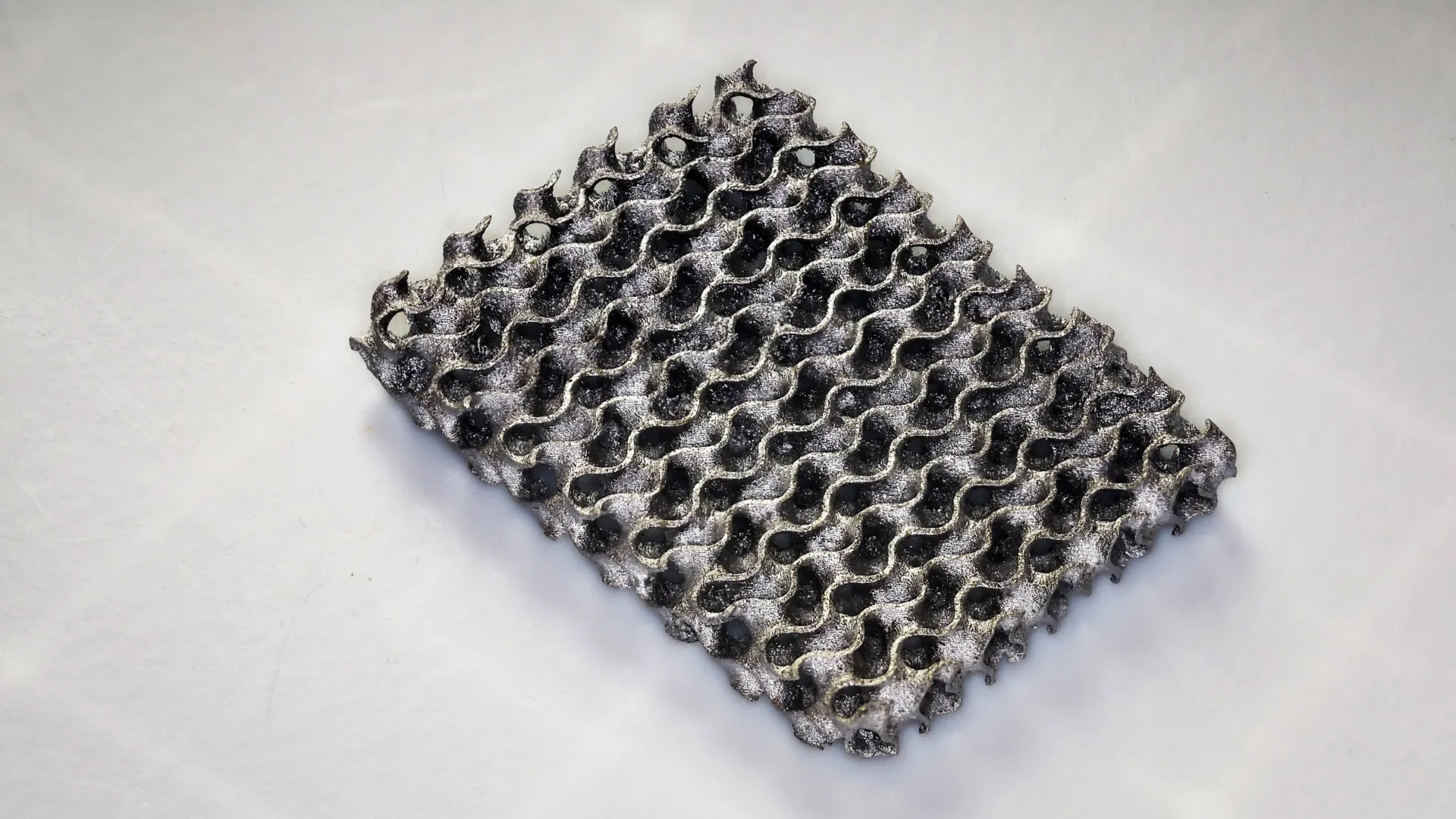Scientists grow metal instead of 3D printing it — and it’s 20x stronger
Hydrogels become high-performance metals and ceramics in EPFL’s game-changing 3D printing breakthrough.
- Date:
- October 10, 2025
- Source:
- Ecole Polytechnique Fédérale de Lausanne
- Summary:
- Scientists at EPFL have reimagined 3D printing by turning simple hydrogels into tough metals and ceramics. Their process allows multiple infusions of metal salts that form dense, high-strength structures without the porosity of earlier methods. Early results show materials 20 times stronger with much less shrinkage. The breakthrough could lead to efficient production of complex energy and biomedical devices.
- Share:

Vat photopolymerization is a type of 3D printing that involves pouring a light-reactive liquid resin into a container and then solidifying specific areas with a laser or ultraviolet light to create a shape. However, because this method only works with light-sensitive polymers, its practical uses are limited.
Some researchers have developed techniques to turn these printed polymers into stronger materials like metals and ceramics, but Daryl Yee, who leads the Laboratory for the Chemistry of Materials and Manufacturing at EPFL’s School of Engineering, says these approaches have major flaws. "These materials tend to be porous, which significantly reduces their strength, and the parts suffer from excessive shrinkage, which causes warping," he says.
To address these issues, Yee and his team have introduced a new approach described in their paper published in Advanced Materials. Instead of hardening a resin already mixed with metal compounds, the researchers first 3D print a framework using a simple water-based gel known as a hydrogel. They then soak this “blank” structure in metal salts, which are chemically converted into tiny metal-containing nanoparticles that spread throughout the gel. Repeating this process multiple times allows them to create composites with very high metal content.
After 5–10 of these “growth cycles,” the remaining hydrogel is removed through heating, leaving behind a dense metal or ceramic object that precisely matches the shape of the original printed gel. Because the metal salts are added only after printing, the same hydrogel template can be used to make a variety of different metals, ceramics, or composite materials.
"Our work not only enables the fabrication of high-quality metals and ceramics with an accessible, low-cost 3D printing process; it also highlights a new paradigm in additive manufacturing where material selection occurs after 3D printing, rather than before," Yee summarizes.
Targeting advanced 3D architectures
For their study, the team fabricated intricate mathematical lattice shapes called gyroids out of iron, silver, and copper, demonstrating their technique's ability to produce strong yet complex structures. To test the strength of their materials, they used a device called a universal testing machine to apply increasing pressure to the gyroids.
"Our materials could withstand 20 times more pressure compared to those produced with previous methods, while exhibiting only 20% shrinkage versus 60-90%," says PhD student and first author Yiming Ji.
The scientists say their technique is especially interesting for the fabrication of advanced 3D architectures that must be simultaneously strong, lightweight, and complex, like sensors, biomedical devices, or devices for energy conversion and storage. For example, metal catalysts are essential for enabling reactions that convert chemical energy into electricity. Other applications could include high-surface area metals with advanced cooling properties for energy technologies.
Looking ahead, the team is working on improving their process to facilitate uptake by industry, notably by further increasing the density of their materials. Another goal is speed: the repeated infusion steps, while essential for producing stronger materials, make the method more time-consuming compared to other 3D printing techniques for converting polymers to metals. "We are already working on bringing the total processing time down by using a robot to automate these steps," Yee says.
Story Source:
Materials provided by Ecole Polytechnique Fédérale de Lausanne. Note: Content may be edited for style and length.
Journal Reference:
- Yiming Ji, Ying Hong, Dhruv R. Bhandari, Daryl W. Yee. Hydrogel‐Based Vat Photopolymerization of Ceramics and Metals with Low Shrinkages via Repeated Infusion Precipitation. Advanced Materials, 2025; DOI: 10.1002/adma.202504951
Cite This Page: